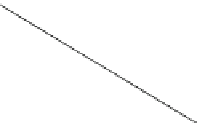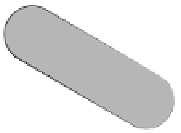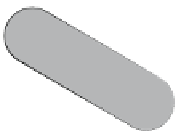Biomedical Engineering Reference
In-Depth Information
Fig. 7.6
Normal cervical
lordosis, dorsal kyphosis,
and lumbar lordosis of a
person standing erect
cervical lordosis
dorsal kyphosis
lumbar lordosis
30°
Fig. 7.7
(
a
) Forces that act
on the lumbosacral disc.
(
b
) Decomposition of forces
into their orthogonal
components
a
b
W cos
W
W sin
W sin
= 30°
W
W cos
In the erect posture, the weight force that acts on the column is always vertical
and each disc supports everything that is above it and there is also the contact force
of the same value, directed upward, once the body is in equilibrium. Figure
7.7a
shows the weight force
W
of the set head/neck/trunk/upper arms/fore arms/hands as
the contact force, and the Fig.
7.7b
illustrates the decomposition of these forces into
their orthogonal components.
Decomposing the forces, we note that their components act perpendicularly to
the disc, causing its compression, and tangentially to the disc with values
W
sin
α
which causes shear. If the lumbosacral angle of a normal subject standing erect is
30
, the value of the shear force is
W
sin 30
¼
0.5
W
.
If the lumbosacral angle, due to incorrect posture or due to weakness of the
flexor muscles of the pelvis or of the abdominal muscles, increases to 40
, the shear












































































































